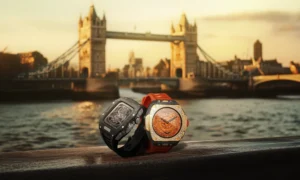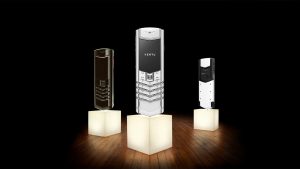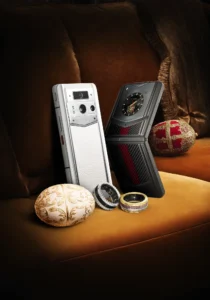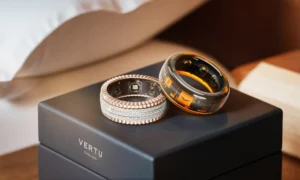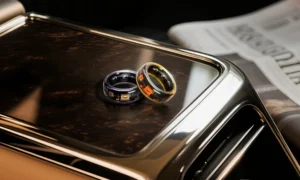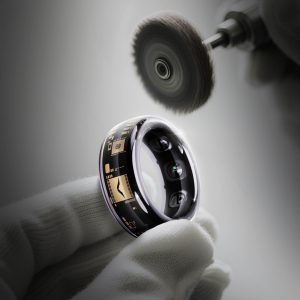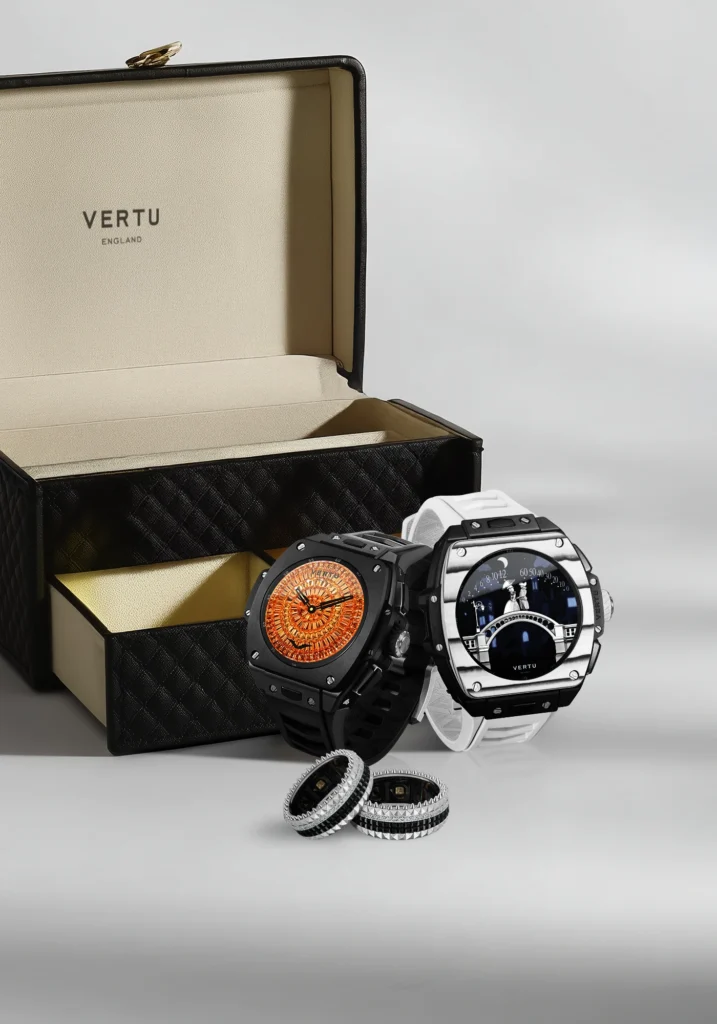
If you want the best health and fitness tracker for 2025, the “oura vs whoop” debate is important. Recent studies say orua vs whoop depends on what you need. Oura is better for price, battery, and comfort. Whoop is better for workout tracking and health data analysis. Look at this quick comparison:
|
Feature |
Oura Ring |
WHOOP |
Winner |
|---|---|---|---|
|
Price |
$299 + $6/month |
$20-$30/month |
Oura Ring |
|
Comfort |
Comfortable, best for daily wear |
Needs adjustment |
Tie |
|
Data Accuracy |
Best for REM sleep |
WHOOP |
|
|
Battery |
Up to 7 days |
4-5 days |
Tie |
|
Activity Tracking |
Misses some workouts |
Superior detection |
WHOOP |
|
Health Data |
Quick, user-friendly |
In-depth, slower load |
Oura Ring |
|
EMF Exposure |
Airplane mode available |
No airplane mode |
Oura Ring |
You can use this table to help you choose. Pick the wearable that matches your health and fitness needs. Oura vs whoop is about what matters most to you in a tracker.
Key Takeaways
-
Oura Ring is good for wearing every day. It looks nice and feels comfortable. It is a smart pick if you want a tracker that is not easy to see.
-
WHOOP is great for tracking workouts. It gives lots of details and quick feedback. This is best for athletes who want to get better.
-
Think about battery life when picking a wearable. Oura can last up to 7 days. WHOOP usually lasts 3 to 5 days. This might change how often you need to charge it.
-
Both devices give helpful health information. Oura looks more at sleep and recovery. WHOOP focuses on fitness and tracking strain.
-
Check your budget before you buy. Oura costs more at first but has lower monthly fees. WHOOP does not cost anything at first but needs a subscription to keep using it.
Design
Oura Ring Style
When you look at the oura ring, you see a piece of jewelry, not just a fitness tracker. The oura ring 4 brings a sleek and stylish design that fits right in with your daily outfits. You can wear it to work, at the gym, or even at a fancy dinner. Many users say the oura ring feels discreet and high quality. It does not scream “tech gadget” on your finger. The new version for 2025 adds a longer battery life and a built-in AI advisor. This advisor gives you health tips right from your finger. The oura ring uses finger pulse to track your heart rate, which helps it stay accurate and comfortable.
Here’s a quick look at how the latest designs compare:
|
Product |
Aesthetics |
Build Quality |
|---|---|---|
|
Oura Ring 4 |
Sleek, stylish, fits any outfit |
High quality, discreet |
|
WHOOP 5.0 |
Sporty, less stylish for some |
Functional, durable |
You might love the oura ring if you want a wearable that blends in and feels like part of your style.
WHOOP Comfort
The whoop 5.0 takes a different approach. You wear it as a band on your wrist, and it has a smaller, lighter design this year. The new bands come in more colors and materials, so you can pick what feels best. Some people say the whoop band does not look as stylish as the oura ring, but it feels comfortable for workouts and sleep. The whoop band focuses on function. It stays out of your way when you move, run, or lift weights. You get a secure fit, which helps the sensors track your health data all day and night.
If you care more about comfort during activity, the whoop band might suit you better. It is not flashy, but it gets the job done and feels good on your wrist.
Comfort
Everyday Wear
When you pick a wearable, comfort matters every day. You want something that feels good from morning to night. Let’s look at how oura and whoop compare for daily use.
|
Device |
Comments |
|
|---|---|---|
|
Oura Ring |
Moderate |
Can feel tight and uncomfortable, especially at night. |
|
WHOOP |
High |
Thin and unobtrusive, leading to no discomfort during overnight wear. |
You might notice the oura ring looks like a regular ring. It feels light and blends in with your style. Some people say it can feel tight, especially when your fingers swell at night. You may need to adjust the size or take it off sometimes. The whoop band sits on your wrist. It feels thin and almost disappears after a while. Many users say they forget they are even wearing it. If you want a tracker that stays out of your way, whoop could be your pick.
Tip: Try both devices for a few days to see which one fits your routine best.
Physical Activity
You want your tracker to keep up when you move. Comfort during exercise can make a big difference. Here’s what users say about oura and whoop during workouts and sleep:
-
The oura ring feels more comfortable for sleep than whoop, which can feel tight on your wrist.
-
The oura ring’s small size lets you wear it without drawing attention.
-
The whoop band stands out more but gives a secure fit during running or lifting.
-
Some people find the whoop band uncomfortable for sleep, like a smartwatch.
-
Many prefer the oura ring for sleep tracking because it feels less noticeable.
If you do lots of physical activity, you might like the secure fit of whoop. If you care about comfort at night, the oura ring could be better. Both have strengths, so think about when you wear your tracker most.
Sleep Tracking
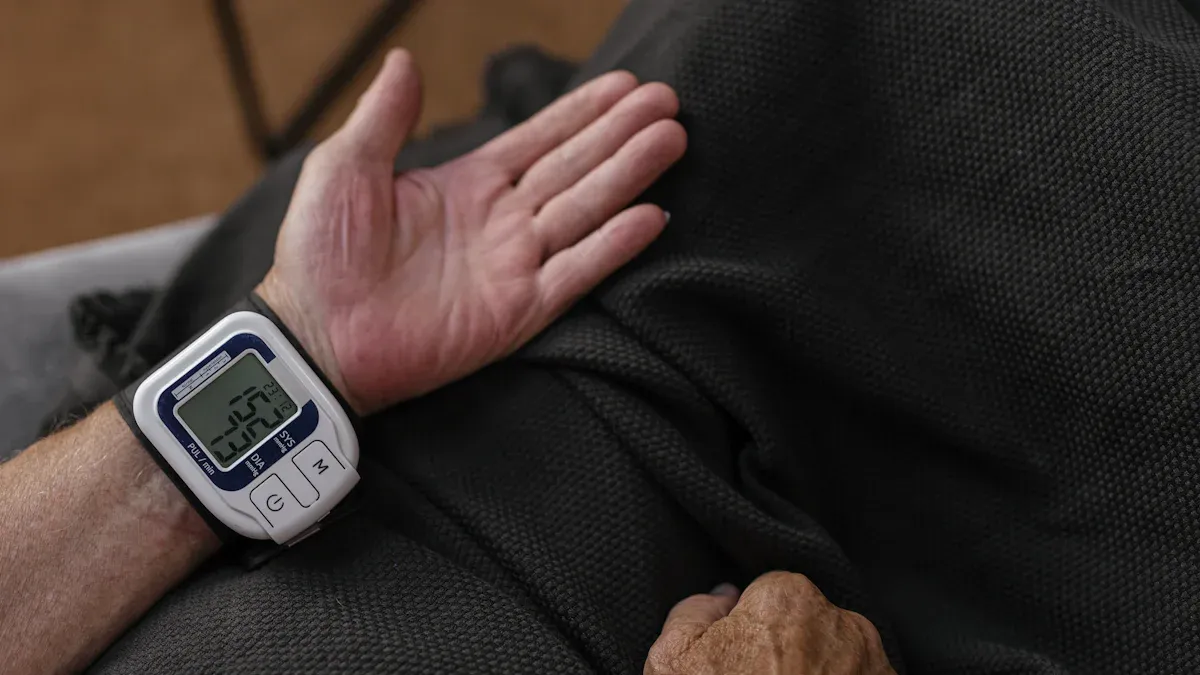
Accuracy
When you check sleep tracking, you want good numbers. Oura and whoop both say they are very accurate, but they work in different ways. Many people say the oura ring feels strong and lasts a long time. Some trust it for sleep tracking, but others think it sometimes says you slept too much. For example, the oura ring might show you slept longer than you did, especially if your sleep was not very good. Whoop is different because it often says you slept less than you really did. If you had a bad night, whoop might show even less sleep than you remember.
Here’s a quick look at how both devices compare:
|
Device |
Over/Underestimation |
Average Bias (min) |
Absolute Bias (min) |
Proportional Bias Description |
|---|---|---|---|---|
|
Oura |
Overestimate |
1.5 |
29.0 |
Overestimates poorer-quality sleep and underestimates better-quality sleep |
|
WHOOP |
Underestimate |
12.2 |
30.3 |
Underestimates poorer-quality sleep and overestimates better-quality sleep |
Some people say whoop’s heart rate tracking does not always feel right. They notice this when they compare it to other devices. A few users even sent their whoop back because of this problem. Still, when you look at whoop next to other wearables like the Apple Watch, the sleep tracking is about the same.
Insights
You want more than just numbers from your tracker. You want easy tips and clear advice. Both whoop and oura ring give you lots of details, but they do it in different ways. Whoop gives you a sleep coach, finds naps by itself, and shows your sleep trends for 30 days. Oura ring gives you bedtime tips and shows how your sleep changes over months.
|
Feature |
WHOOP |
Oura Ring |
|---|---|---|
|
95%+ |
93%+ |
|
|
Sleep Debt Tracking |
Yes |
Yes (Manual) |
|
Nap Detection |
Automatic |
Manual |
|
Sleep Trends |
30-day analysis |
Long-term trends |
|
Recovery Score |
Green/Yellow/Red system |
Excellent/Good/Fair/Poor |
|
Smart Features |
Sleep Coach |
Bedtime Guidance |
If you want a tracker that helps you see patterns and get better sleep, both are good choices. Oura ring is best for long-term trends. Whoop is great for its sleep coach and automatic features. Both give you helpful insights, so you can make smart choices for your health.
Activity Tracking
WHOOP Metrics
If you want a tracker that takes workout tracking to the next level, you should look at whoop. The whoop band stands out for its ability to measure both cardiovascular and muscular load. You get a full picture of how hard your body works during each workout. After you finish, you can log strength training sessions for even more accurate fitness tracking. The whoop band gives you a personalized strain score based on your weight, reps, and sets. This helps you understand how much stress your body handles.
Here’s a quick look at how whoop measures strain for different workouts:
|
Activity Type |
|
|---|---|
|
Running (1 hour) |
12.0 |
|
Walking (1 hour) |
6.5 |
|
Functional Fitness |
10.1 |
You can see how your workouts compare at a glance. The whoop band also lets you track your progress over time. Many fitness trackers miss this level of detail. If you want to push your limits, whoop makes it easy to see where you stand.
Tip: Use the strain score to plan your next workout and avoid overtraining.
Oura Capabilities
The oura ring brings a different approach to activity tracking. It shines when it comes to automatic workout recognition. You do not have to log every workout by hand. The oura ring Gen 4 can pick up and label many activities, even yard work or a quick run. This makes it easy to keep your fitness tracking up to date without extra effort.
Many users say the oura ring does a great job at identifying workouts and tracking total time. You get a clear summary of your activity each day. While the oura ring may not offer the same detailed strain scores as whoop, it still gives you valuable insights. If you want a tracker that handles workout tracking with less fuss, oura could be your best choice.
Some fitness trackers struggle with auto-detection, but oura stands out. You can trust it to catch most of your workouts, so you never miss a step in your activity tracking journey.
Battery
Duration
Battery life can make or break your experience with a wearable. You want a device that keeps up with your busy life. Oura and WHOOP both promise long battery life, but real-world use tells a different story.
Here’s a quick look at how they compare:
|
Device |
Average Battery Life |
|---|---|
|
Oura Ring |
|
|
WHOOP Band |
Three to five days |
Oura says you can get up to seven days on a single charge. Most people find it lasts about five or six days before you need to recharge. WHOOP claims four to five days, but many users say it usually needs charging after three days. If you want fewer charging breaks, Oura gives you a bit more freedom.
Tip: If you travel a lot or forget to charge your devices, Oura’s longer battery life might fit your lifestyle better.
Charging
Charging your wearable should be quick and easy. Oura and WHOOP take different approaches here.
|
Device |
Charging Time |
Battery Life |
|---|---|---|
|
Oura |
Up to 7 days |
|
|
WHOOP |
2–3 hours |
4 to 5 days |
Oura Ring sits on a small, stylish docking station. You just pop it on, and it charges in about 20 to 30 minutes. That’s fast! You can top it up while you shower or get ready in the morning.
WHOOP uses a clip-on battery pack. You slide it onto the band, and it charges while you wear it. This means you never have to take WHOOP off, even when it’s charging. The downside? The battery pack feels bulky and takes about two to three hours to fully charge.
-
Oura Ring: Quick charge, elegant dock, up to a week of use.
-
WHOOP: Clip-on charger, charges while you wear it, but takes longer.
If you want fast charging and a sleek look, Oura wins. If you hate taking your tracker off, WHOOP’s charging style might work better for you.
App Experience
Data Display
When you open the app for your wearable, you want clear information. Oura and WHOOP both show your health data, but they do it in different ways. Oura gives you simple graphs and easy-to-read numbers. You see your sleep score, activity, and readiness at a glance. The app uses colors and shapes to help you spot trends quickly. You do not need to dig for details. Everything feels organized.
WHOOP takes a deeper approach. The app shows lots of analytics and charts. You can track your strain, recovery, and sleep stages. Some users like this level of detail. You get more control over your data. However, you may need to enter some information by hand. This can feel like extra work. The app sometimes feels crowded with numbers and options.
Here’s a quick look at how the apps compare:
|
Feature |
Oura App |
Whoop App |
|---|---|---|
|
Data Visualization |
Useful and easy to understand |
Deep analytics but requires manual data entry |
|
Ease of Navigation |
Simple abstractions and detailed graphs |
Complicated navigation for some users |
Tip: If you want quick answers and simple charts, Oura makes it easy. If you love digging into numbers, WHOOP gives you more to explore.
Ease of Use
You want an app that feels easy every time you use it. Oura keeps things simple. You tap a few buttons and see your sleep, activity, and health scores. The app guides you with clear labels and helpful tips. Many users say Oura’s app matches their need for fast, stress-free tracking.
WHOOP’s app offers more features, but you might find it harder to use. Some users feel lost with all the options. You may spend extra time looking for the right chart or setting. The subscription model also makes things tricky. You pay every month, which some people do not like. Oura only asks for a small monthly fee, and some users prefer this.
-
Oura’s app feels simple and focused on sleep.
-
WHOOP’s app gives you more data but can feel overwhelming.
-
Many users pick Oura for its easy navigation and clear design.
-
Some users dislike WHOOP’s subscription and manual data entry.
If you want an app that helps you track health without confusion, Oura is a strong choice. If you want deep data and do not mind extra steps, WHOOP might fit you better.
Price
Cost
When you look at wearables, the cost is a big deal. You want to know what you pay up front and what you pay each month or year. Here’s how Oura and WHOOP stack up:
-
Oura Ring 4 has a one-time cost of $349. If you want all the features, you pay $5.99 each month for a subscription.
-
WHOOP 5.0 does not have a one-time device cost. Instead, you pay for a membership. There are three options:
-
One: $199 per year
-
Peak: $239 per year
-
Life: $359 per year
-
You can see that Oura asks for a bigger cost at the start, but the monthly fee is lower. WHOOP spreads the cost out over the year. You do not own the device with WHOOP; you pay to use it as long as you keep your membership.
Here’s a quick table to help you compare:
|
Device |
Upfront Cost |
Subscription/Yearly Cost |
Total First Year Cost |
|---|---|---|---|
|
Oura Ring 4 |
$349 |
$71.88/year |
$420.88 |
|
WHOOP One |
$0 |
$199/year |
$199 |
|
WHOOP Peak |
$0 |
$239/year |
$239 |
|
WHOOP Life |
$0 |
$359/year |
$359 |
Value
You want to get the most for your money. Oura gives you a device you own, and you can use basic features without a subscription. The full experience, like advanced sleep and health insights, needs the monthly fee. WHOOP gives you all features as long as you pay for your membership. If you stop paying, you lose access and the device stops working.
Think about how long you plan to use your tracker. If you want to keep it for years, Oura’s cost may feel better over time. If you like trying new tech every year, WHOOP’s membership might make sense. Both offer strong health tracking, but the value depends on your budget and how you use the device.
Tip: Add up the total cost for two or three years before you decide. This helps you see which wearable fits your wallet and your goals.
Special Features
Cycle Tracking
If you want a wearable that helps you understand your menstrual cycle, both Oura and WHOOP offer something different. Oura Ring stands out for its cycle tracking. You can use it to spot changes in your cycle, even if your periods are not regular. Oura tracks how stress, sickness, or changes in your daily life affect your cycle. This helps you see what is normal for you and what might need attention. You get clear insights, so you can make better choices for your health.
Here’s what makes Oura’s cycle tracking helpful:
-
Tracks changes in cycle length, even with irregular periods.
-
Shows how stress or illness can change your cycle.
-
Helps you spot patterns and possible health issues.
WHOOP does not focus as much on menstrual tracking. It gives you strong fitness and recovery data, but if you want deep insights into your cycle, Oura is the better pick.
EMF Exposure
You might worry about EMF (electromagnetic field) exposure from wearables. Oura and WHOOP handle this in different ways. Oura Ring lets you turn on airplane mode. This means you can wear it at night and not worry about extra EMF. The ring still collects your sleep data, so you do not miss anything. If you care about lowering EMF, Oura gives you peace of mind.
WHOOP does not have an airplane mode. It keeps sending signals all the time. Some people feel uneasy about this, especially if they are sensitive to EMF. High EMF exposure can cause health problems for some users. If this is a concern for you, Oura is the safer choice.
Here’s a quick table to compare:
|
Feature |
Oura Ring |
WHOOP |
|---|---|---|
|
Airplane Mode |
Yes, reduces EMF |
No, always on |
|
EMF Exposure |
Low during sleep |
High, continuous |
|
Sleep Data |
Still collected in airplane mode |
Always collected |
Tip: If you want to share your health journey, Oura also lets you join Circles and connect with friends. WHOOP focuses more on fitness and strength tracking, so pick what fits your lifestyle best.
Verdict For Health
Best For Fitness
If you want to push your workouts and see real progress, you might lean toward whoop. The whoop band gives you real-time feedback during exercise. You see your heart rate, calories burned, and a Strain Score that shows how hard you worked. Many athletes use whoop to track their training and recovery analysis. You get daily health data that helps you plan your next workout and avoid overtraining.
A study by Dr. Dean Miller found that both whoop and oura ring track heart rate and sleep well, but whoop shows higher heart rate variability readings. This can help you understand your recovery tracking after tough workouts. The table below shows how both devices compare on key fitness metrics:
|
Metric |
Oura Ring |
WHOOP Band |
|---|---|---|
|
Heart Rate Variability |
Slightly lower |
Higher average |
|
Resting Heart Rate |
Nearly identical |
Nearly identical |
|
Workout Tracking |
Automatic, less detail |
Real-time, in-depth |
|
Strain Feedback |
Basic |
Detailed |
You get more health insights about your training with whoop. If you care about fitness, want to improve your performance, and love seeing your health data in detail, whoop is a strong choice.
Tip: If you play sports or train hard, whoop helps you see your progress and guides your recovery.
Best For Lifestyle
If you want a wearable that fits into your daily life, oura ring stands out. You can wear it anywhere, and it looks like regular jewelry. The oura ring tracks your sleep, stress, and activity without needing much effort from you. You get health insights about your sleep and recovery, which help you feel better every day.
Oura focuses on wellness and balanced living. You see long-term trends in your health data, which helps you spot patterns and make changes. The table below shows how oura and whoop support different lifestyles:
|
Device |
Best For |
Key Features |
|---|---|---|
|
Oura |
Wellness, busy professionals |
Sleep optimization, stress reduction, recovery analysis |
|
WHOOP |
Athletes, performance seekers |
Real-time strain feedback, workout tracking |
You might like oura if you want easy recovery tracking and health insights without extra work. The oura ring helps you manage stress and improve sleep. You get passive tracking, so you do not have to log every activity.
-
Oura ring is great for sleep optimization and wellness.
-
You get simple health data and recovery analysis.
-
The ring is discreet and fits any style.
Note: If you want a tracker that blends into your life and helps you feel your best, oura ring is a smart pick.
You want the best wearable for your health goals. If you care about sleep and recovery, oura gives you gentle feedback and easy tracking. Many users love its focus on sleep quality and stress management. If you want to boost athletic performance, whoop stands out with detailed workout stats and charging you never have to stop for. People often switch for better data or comfort. Think about what matters most to you, then pick the device that fits your lifestyle.
FAQ
Can you wear Oura and Whoop together?
You can wear both devices at the same time. Many people do this to compare data and get a full picture of their health. Just make sure you feel comfortable with both on your body.
Does Oura or Whoop track stress levels?
Oura tracks stress by measuring heart rate and body temperature. Whoop focuses more on strain and recovery. You get stress insights from Oura, while Whoop helps you understand how hard your body works.
How accurate is sleep tracking on Oura and Whoop?
Both devices give you reliable sleep data. Oura sometimes overestimates sleep time. Whoop may underestimate it. You can trust both for trends, but numbers might not match exactly.
Can you swim with Oura or Whoop?
You can swim with Oura. It is water-resistant up to 100 meters. Whoop is also safe for swimming and showering. You do not need to worry about water damage with either device.
Do you need a subscription for Oura or Whoop?
You need a subscription for full features on both devices. Oura offers basic tracking without a subscription. Whoop requires a membership for all features and device access.


